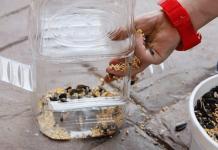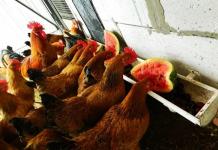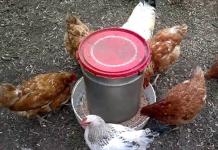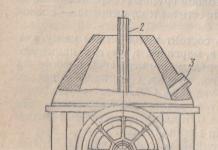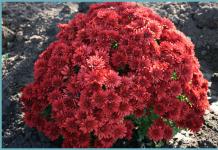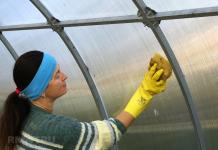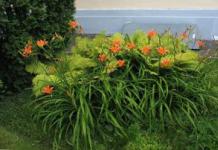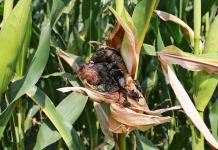Globular chrysanthemums were bred quite recently for growing in gardens, and in a short time they managed to gain great popularity. These flowers are exceptionally decorative and at the same time unpretentious in care. The flower feels great in open ground and does not cause much trouble with planting.
Varieties and varieties
Recently, spherical chrysanthemums have enjoyed unprecedented popularity. And the number of varieties reaches four thousand hybrids of various colors, including blue and green shades. Only viewing numerous photos will help you decide on the choice of variety. Low chrysanthemum bushes are densely dotted with flowers, which gives them a special charm. These plants bloom from August until frost.

The bushes of this chrysanthemum have the shape of a ball, densely strewn with flowers.
Here are some of the common varieties:
- "Ida" - a bush up to 60 cm tall in the shape of a ball, dotted with small (up to 3 cm in diameter) flowers. Blooms from September.
- "Knopa" - is distinguished by abundant flowering. During flowering, the low bush (30-35 cm) is completely covered with yellow flowers, the number of which reaches 160 flowers at a time.
- "Multiflora" is the most common variety. Small flowers have a very wide range of colors. Blooms from early September.
Planting spherical chrysanthemum
When grown from seeds, chrysanthemums lose their varietal properties, so these flowers are planted as shoots. A place for the plant must be chosen that is illuminated. In the shade, the flower can stretch out and change the timing of flowering. Chrysanthemum prefers nutritious and loose soil. In addition, good drainage will also play an important role in the development of the plant.

Globular chrysanthemums propagate by cuttings
It is best to plant cuttings on days when there is no sun. If this is not possible, then for several days after planting it is advisable to shade the plant a little, but in such a way that the shelter and cuttings do not touch. The shoots are planted in holes up to 40 cm deep. The hole must be well watered, a drainage layer must be laid and covered with a mixture of soil and vermicompost in a ratio of 20:1. There is no need to deepen the sprouts excessively.
Advice. If you are planting a tall variety, then take care of the support.
Caring for chrysanthemums
Gardeners often recommend carrying out the pinching procedure on the 20th day after planting in the ground. To do this, it is necessary to remove the upper part of the shoot, on which several nodes are located. Pinching is done in order to form a spherical shape of the bush. However, there are also flower growers who claim that the shape is genetically inherent in this type of chrysanthemum, and pinching can be omitted.

Water the plant often, but not too much
Watering plays a significant role in proper care. Following simple rules will preserve the splendor of spherical chrysanthemums and prevent lignification of young shoots. In hot summers, chrysanthemums need frequent but moderate watering.
Advice. Chrysanthemums will be grateful if you water them with rain or settled water.
Despite the fact that spherical chrysanthemums are a perennial crop, it is not recommended to grow them in one place for more than two years in a row. This leads to degeneration of the variety and modification of the shape of the bush; the shoots become elongated and turn pale. Therefore, it is recommended to dig up the plant every two years, divide and replant. This especially applies to the southern regions, where the plant is left to overwinter in open ground.

Perennial chrysanthemums should be replanted to a new location every 2 years
After the chrysanthemums have bloomed, the stems are cut to 10 cm and the chrysanthemum is prepared for wintering. In the southern regions, flowers are simply left in the ground, without additional preparation. In the middle zone, the plant can be covered with spruce branches or other covering material for the winter, if the winter temperature does not drop too low. If the winters are harsh and, moreover, without snow, it is recommended to dig up chrysanthemums for the winter and replant them in flowerpots, which are stored in a dark, cool place until spring.
Attention. If there is fungus or mold in the basement or cellar in which you plan to leave the chrysanthemum for the winter, this can destroy the plant. To avoid the appearance of unwanted organisms, it is necessary to provide good ventilation and treat damaged walls with copper sulfate or used machine oil.
You can awaken a chrysanthemum in a flowerpot as early as April, and the cover from the garden bed must be removed immediately when it gets warm to prevent the flowers from getting wet.
Fertilizer and top dressing
Globular chrysanthemums are among those flowers that are better to underfeed than to overfeed. Therefore, gardeners recommend fertilizing once - in the spring at the beginning of the season. Most often, organic matter is used for this - humus or mullein. If the plant still looks weak, you can apply phosphorus-potassium fertilizers, but only before the buds begin to form.

Feed chrysanthemums with organic fertilizers
Propagation of spherical chrysanthemum
Chrysanthemums can be propagated in three ways:
- Cuttings.
- Rhizome division.
- Dividing the bush.
Propagation by seeds, as mentioned above, is not recommended due to the fact that the plant loses all varietal characteristics.
Flowers are transplanted in the spring, when the frosts have finally gone away. If the plant overwintered in the ground, then during this period it must be dug up and divided. It is recommended to plant the divisions in a new place, at a distance of 50 cm from each other.

When replanting a chrysanthemum, give it enough time to take root before frost sets in.
You can propagate the plant at the end of summer, but the time must be calculated so that the chrysanthemum has time to take root before winter. If you are not sure that this is possible, it is better to plant the young plants in flowerpots and leave them to overwinter indoors, where the temperature in winter is 4-7 C. Under these conditions, the chrysanthemum is guaranteed to overwinter and in the spring the young bushes can be planted outdoors priming.
Advice. Do not forget to regularly water plants planted for the winter.
Cuttings are best done in February. At this time, chrysanthemums need to be planted in a greenhouse and watering should be increased. When young shoots appear, you need to choose the strongest ones. The length of the shoots should not exceed 10 cm. Cut cuttings are planted in a prepared mixture of sand, garden soil and humus and covered with glass or film. After 3-4 weeks, the plants have already taken root enough to be planted in pots, and when the last frost has passed, the crop can be planted in open ground.
Diseases and pests
Chrysanthemum is quite resistant to various kinds of diseases, but does not have one hundred percent immunity. Sometimes flower growers complain that the lower part of the plant stem is exposed and the leaves turn black. This is the result of the action of “powdery mildew”. It appears when the bush is over-watered and too dense. In addition, the cause may be a large temperature difference. In case of defeat by this disease, it is necessary to treat the plants with preparations containing copper. You can also carry out preventive spraying at the beginning of summer.

Regularly collect caterpillars from chrysanthemum bushes
Occasionally, you may encounter the fact that all the leaves on the plant turned brown and began to dry out. This means that the plant has been burned. It is recommended to remove such a bush from the garden bed and burn it.
Inspect the plant regularly for caterpillars, which can harm the flowers by eating the buds. In case of invasions of caterpillars, spider mites and aphids, it is necessary to treat the plant with special preparations that are sold in gardening stores.
Fitosporin can be added to irrigation water for prevention purposes. This will prevent root rot from occurring.
Chrysanthemums spherical in landscape design and in combination with other plants
If you look at the numerous photos of spherical chrysanthemums, you can see that their use in landscape design is quite diverse.
When choosing a place for chrysanthemums, it is necessary to take into account the size of the bush. Tall plants will be better combined with the same tall neighbors, and short ones, respectively, with small plants. But don't shy away from experimentation. You can plant a bed of chrysanthemums of different heights and shades, placing smaller varieties in the foreground.
Globular chrysanthemums look great with conifers. Bright rounded shapes smooth and give liveliness to strict evergreen crops.

Globular chrysanthemum in landscape design
Low varieties of this perennial flower are widely used to create mixed borders. In addition, they can mark the boundaries of beds and paths.
The variety of colors of spherical chrysanthemums allows you to experiment with color combinations. For example, a green lawn will be an ideal backdrop for white chrysanthemums. Yes, and yellow flowers will look spectacular against the background of emerald grass or silver leaves of noble elimus.
It will be interesting to look like spherical chrysanthemums in combination with cereals, marigolds or cosmea.
In autumn, when most of the plants have already faded and are preparing to winter, bright flower beds, arranged from chrysanthemums of various colors, will delight your eye with festive flowers. Plant yellow, red, white and pink flowers and enjoy the riot of colors.

Chrysanthemums of different colors look very beautiful in one flowerbed.
Ball-shaped chrysanthemums are ideal for mixborders. Alternatively, these lush flowers can be used as a vibrant focal point in your lawn, with cold-tolerant plants such as snapdragons and calendula bordered along the edges.
Sometimes gardeners grow chrysanthemums as a home potted flower. Vases with these flowers decorate terraces and balconies. But not all varieties are able to show their full potential in a limited space.
In general, caring for chrysanthemums is not burdensome and does not require any special skills. In order for these beautiful autumn flowers to delight you until the frosts, it is enough to follow simple rules. A little attention and patience - and your garden will be irresistible.
Varieties of spherical chrysanthemum: video
Types of globular chrysanthemum: photo



Garden chrysanthemum is a perennial plant. This flower is native to Southern Europe and North America. The name of the plant is translated from Greek as “golden flower”: chrysos – “gold” and anthos – “flower.”
This plant belongs to the Asteraceae family. Some species are frost-resistant and bloom until late autumn. The plant is quite drought-resistant. The height of the stems reaches up to 1.5 meters, the minimum size is up to 15 centimeters.
This page presents perennial garden chrysanthemums, their varieties with photos and the rules for planting plants and their subsequent care.

Varieties of garden perennial chrysanthemum (with photo)
Among the main varieties of garden chrysanthemum, the following can be distinguished. they are presented with a description and photo, from which you can get a preliminary idea of their decorative properties.
Look at the photo of the soda perennial chrysanthemum variety to know how you can effectively and quickly decorate your garden plot.
"Wally Roof"
The flowers are fluffy, pink-lilac. The shape is flat, up to 6-8 centimeters in diameter. Blooms in late September - October.

"A swan song"
The flowers are white-pink, fluffy, flat in shape, up to 5-6 centimeters in diameter. The bush reaches a height of up to 45 centimeters. In the center of the flower the petals are snow-white, closer to the ends they acquire a pink tint as they bloom. The plant produces flowers from late summer to mid-October.

"Mascot"
This is a semi-double variety with small flowers. The bush is small, reaching a height of up to 25 centimeters. The flower is flat, pink-raspberry in color, approximately 2 centimeters in diameter. It blooms from the end of July until frost.

"Alexandrite"
This is an early semi-double variety; individual flowers are double. The bush reaches a height of 35-40 centimeters. The center of the flower has a yellow-pink tint, and its edges are almost white. The flower reaches five centimeters in diameter. Flowering period: August to mid-October.

"Golden Orpheus"
The plant of this variety has very large double flowers with a diameter of up to 6 centimeters. The flowers are golden in color.

"Varvara"
The bush has a straight stem, up to 30 centimeters high. The flowers of the plant are semi-double, lilac-pink in color, darker in the center, snow-white at the edges. The diameter of the flower is 4-4.5 centimeters. Flowering period - late August - early September.

"Zarnitsa"
Pompon variety, small-flowered. The flowers are red-brown in color. It blooms from mid-September until frost.

The variety is semi-double, small-flowered. The flower in the central part is yellow, and the edges are raspberry-lilac, up to 5-6 centimeters in diameter. Flowering period - mid-August - October.

"Aurora"
The flowers of the plant are orange, 8-10 centimeters in diameter, flat in shape. The plant grows to 70-80 centimeters in length. The leaves are dark green, medium in size. Blooms in September-October.

"Altgold"
The bush of the plant is small, up to 60 centimeters in height. The flowers are densely double, golden-yellow in color, 5-7 centimeters in diameter, flat in shape. The leaves are dark green in color and small in size. Flowering period - late August - October.

Planting and caring for garden perennial chrysanthemums
This garden flower is not very demanding on soil; any soil that is permeable and enriched with nutrients is suitable for it. However, the flower does not like to be replanted in the same place.
Planting of garden perennial chrysanthemums can be carried out in winter in an apartment for seedlings and in the fall by sowing in the ground. The plant does well when the soil contains peat or compost.
It should be remembered that feeding this plant with fertilizers containing nitrogen will speed up the process of growth of the stem and inflorescence, and a lack of nitrogen will lead to inhibition of flower development.
Phosphorus fertilizers accelerate the flowering process, and potassium fertilizers have a beneficial effect on the frost resistance of the flower.
On average, per square meter of flower bed, up to five buckets of manure, 35 grams of ammonium nitrate, 100 grams of superphosphate and 50 grams of potassium magnesia are added to the soil before planting.
In addition, once a week the plant is fed with a mixture of mineral fertilizers. Before planting a flower, the bed should be dug to a depth of 30 centimeters, adding 1 sq. a meter, two or three buckets of peat.


The bed for planting perennial garden chrysanthemums should not be wide - approximately 1-1.2 meters. Be sure to level the ground well to avoid water pooling on it when watering.
It is advisable to water the bed right before planting the plant. For 1 sq. per meter it is allowed to plant up to 55 single-flowered plants of this species.
Chrysanthemum grows quite quickly - approximately four months pass from the moment of planting to the start of flowering. But at the same time, an important point is to comply with the condition that the soil under the plant must be moist.
Caring for perennial garden chrysanthemums includes a number of agrotechnical measures aimed at maintaining good structure and nutritional value of the soil mixture.
Initially, after planting, it is advisable to water garden chrysanthemums with extreme caution and not too often. The plant needs moisture most when the buds appear. It is at this time that it is recommended to water frequently and abundantly.


The flower prefers not so much warmth as a constant certain temperature of the surrounding air. In the first time after planting, the temperature should be 18 degrees Celsius if it is sunny outside, and 16 degrees if it is cloudy outside.
The flower feels especially good if in the first month the air temperature does not fall below 15 degrees Celsius. If the temperature is lower, the process of development of sleepy buds will be disrupted, and accordingly the flowering period will be disrupted.
When buds form, the preferred temperature during the day and night is 16 degrees Celsius, and the flowering period of the bud is 12-13 degrees Celsius.
Of course, such a temperature regime can only be achieved by keeping the plant in greenhouse conditions, promptly placing flowers in shaded places or organizing ventilation and spraying the buds with water.
The color, size, shape of the flower, and stem height depend not so much on the variety of chrysanthemum, but on the process of growing the flower.
So, for example, a large flower on a long stalk can be obtained by pinching the moment when the plant reaches a height of 15 centimeters, and pinching should be done again later in order to remove the first bud of the crown, from which, as a rule, Quality flowers are not produced. Only the second bud of the crown is left to bloom.
Small-flowered chrysanthemums are pinched once to remove the buds of young plants that have grown to 18-20 centimeters in length.


To prevent the plant from bending or breaking, it is recommended to tie it to a wire or using pegs, and it is best to install a net along the rows of the flower garden.
The first mesh can be attached at a height of 20 centimeters above the ground, and the second at a height of 40 centimeters, naturally, when the plant reaches this mark.
When the flowers grow even more, it is advisable to raise the second grid to another level.
Everyone knows that chrysanthemums are autumn flowers, however, if certain conditions are met, you can observe their attractiveness throughout the year.
This plant prefers shortened days, in other words, it feels comfortable when the daylight hours are 13 hours. Knowing this feature of the flower, with the help of fluorescent lamps and placing the plant in a shaded place, natural lighting conditions can be adjusted from time to time.
The most popular and easiest way to propagate garden flowers is cuttings. Cuttings are prepared from the top of the plant. They should have 3-4 leaves.
The length of the cutting should be 6-8 centimeters. It is advisable to cut the cutting when it has not yet become woody, retreating 1-2 millimeters under the lower leaf node.
When the cuttings have roots, which happens in the spring, they should be transplanted into pots, and it is recommended to place the pots in ridges in a greenhouse.


Garden perennial chrysanthemum is one of the few plants that tolerates cold better than heat. If warm temperatures are firmly established in May, then the buds will be formed late. Heat also has a negative effect during the budding period of the plant. But lower temperatures are not an obstacle to growing perennial chrysanthemums - after the first frost, these plants can bloom again.
Conditions for growing perennial chrysanthemums
The varied palette of autumn colors is largely due to Korean small-flowered chrysanthemums, lovingly called “oak trees” by the people.
Chrysanthemums belong to the Asteraceae family. This is a rhizomatous plant with a height of 25 to 100 cm.


As you can see in the photo above, garden perennial chrysanthemums have lush green, dark and decorative leaves.
The flowers at the end of flowering stems are of a wide variety of colors, their diameter is from 3 to 9 cm. Like the leaves, they exude a pleasant aroma of freshness. Blooms from August until frost.
The main advantage of chrysanthemums is their cold resistance. The growth of their shoots begins at +2...+6ᵒС, and the formation of buds - at +9...+10°С. During the growing season, plants tolerate a short-term drop in temperature to -3°С, but the buds die already at 0°С. In late autumn and winter, chrysanthemums can withstand temperatures of -10 C. After autumn frosts, they are able to “retreat” and continue flowering again.
The extraordinary cold resistance of chrysanthemums allows them to be grown without winter shelter in the south or with small, light shelter in the middle zone and northern regions.
When planting perennial chrysanthemums, remember that these cold-resistant plants do not tolerate high temperatures. If temperatures rise above 25ᵒ in May, chrysanthemum flower buds are set late. They also have a negative attitude towards elevated temperatures during the budding period.


How to grow perennial chrysanthemum in your garden? These plants are demanding of light and are considered a light-loving crop with short daylight hours. The transition of a plant to flowering depends on the intensity and quality of light. The light should be intense, but the daylight hours should be short. Chrysanthemums usually do not bloom in the shade. However, plants experience such light requirements only in the second period of their life, during the transition to the generative stage. During the period of growth of vegetative organs - shoots and leaves, i.e. in spring, light is needed not only intense, but also long-lasting. Then the growth of chrysanthemums amazes with its intensity.
Flowers are undemanding to soil. A necessary condition for growing chrysanthemums is medium and heavy loamy soil with good aeration and a high content of organic matter, that is, the soil must be fertile and moisture-absorbing, which is best combined in chernozems.
In the garden for chrysanthemums you need to find a sunny place with permeable, fertile soil. The land is prepared in advance. After all, you are planting a perennial plant. In the fall, the area must be dug up using a spade with a preliminary application of humus and phosphorus-potassium fertilizers. Early in spring the land is raked and planted.
How to plant a chrysanthemum correctly and how to care for it
Propagation of perennial chrysanthemums is carried out by dividing the mother plant or by rooted cuttings, which are cut from the mother plant during the period of intensive growth. They take root easily in washed river sand within 7-10 days.
How to plant a chrysanthemum correctly to ensure abundant flowering? The simplest, although less economical, way is. Delenki easily take root both in spring and autumn. If planting is done in the fall, it is better to provide light cover from fallen leaves.
Caring for perennial garden chrysanthemums is not difficult, but do not forget that they must be periodically watered, loosened and fed.
Despite their unpretentiousness, chrysanthemums respond very gratefully to , among which they give preference to potassium, nitrogen and calcium. The optimal ratio of nutrients is nitrogen - phosphorus - potassium - calcium - magnesium contained in a complex fertilizer (Solution, Aquarin, Zdraven, etc.).
The greatest need for potassium is during budding. If there is a deficiency, the plants look lethargic and the buds fall off. When there is a nitrogen deficiency, the leaves become pale green and small. Small flowers and a delay in flowering characterize a lack of phosphorus.
Before you care for chrysanthemum, stock up on fertilizers. Top dressing should begin 2-3 weeks after planting:
- The first feeding should be complete, i.e. contain basic nutrients with a predominance of nitrogen necessary for the growth of green mass (for example, humatized urea). Fertilizers are applied with irrigation water or directly into the soil, which must be moist.
- It is advisable to give a second feeding before budding with fertilizers containing more potassium and phosphorus.
Top dressing with fertilizer is unthinkable without watering. It is necessary to water as the soil dries, but without getting carried away with it during flowering. After watering, the soil should be loosened, giving oxygen to the roots and retaining moisture. For this purpose, you can apply.
In order to get beautiful bushes of the correct shape, shoots are pinched in the summer. All shoots that violate the shape of the bush are pinched (removed). Strongly growing shoots are pinched to encourage lateral growth and thus produce abundant flowering.
Despite the winter hardiness of chrysanthemums, it is necessary to prepare them for winter. This especially applies to young plants. Frosts down to -20...-25°C can cause significant harm to them. In late autumn, when constant frosts set in, the shoots of chrysanthemums are cut off, leaving 10 cm stumps. They protect the plants from freezing by trapping snow. After this, the chrysanthemum bushes should be covered with fallen leaves, dry grass or trimmed tops. But the shelter should be light and breathable. Plants cannot tolerate flooding or rotting during thaws.
Chrysanthemums can be grown in one place without replanting for more than 5 years. After this period, they grow greatly, the flowers become smaller, and most importantly, they lose their winter hardiness and die from frost.
Popular varieties of perennial chrysanthemums
Listed below are the most popular varieties of perennial garden chrysanthemums grown in the middle zone:


"Autumn Sun" - bright yellow flowers with a honey aroma. Bush up to 60 cm in height. Blooms from August until frost.


"Autumn Sunset" - red, single flowers. Bush up to 45 cm in height. Blooms until frost.


"Korean girl" - bronze-colored flowers with a golden edge, bush height up to 65 cm. Blooms before frost.


"Pink Daisy" - flowers are brown-pink, non-double. Bush height 60 cm. Blooms from August to September.


"Modesty" - flowers are white with a pink tint, bush height is 60 cm. Blooms from August to September.


"Golden Tips" - flowers are copper-red with a golden border at the ends, semi-double. The height of the bush is up to 65 cm. It blooms until frost.


"Daisy" - flowers are white with a cream tint, semi-double. The height of the bush is up to 65 cm. It blooms from August to September.


"Curb yellow" - bright yellow, non-double flowers. Bush up to 50 cm. Blooms from August to October.


"Late Red" - flowers are velvety red, non-double. Bush height up to 65 cm. Blooms from September until frost.
Korean chrysanthemums are indispensable in. They amaze with their brightness, originality and resistance to adverse conditions.
Look at the photo: these varieties of perennial garden chrysanthemums are perfectly combined with tree species and other flowering plants:


Examples of a successful combination would be chrysanthemums with spruces, tamarisks, or with floral perennials - solidago, tagetes. Chrysanthemums are beautiful against the background as solitary plantings.
“The chrysanthemums in the garden have long since faded” - these sad words from a Soviet song are known to each of us. Well, for some they have faded, but for us they will bloom and show themselves.
Perennial chrysanthemums begin to bloom in late summer. In terms of their beauty, they are in 2nd place, second only to roses. These plants are native to Asian countries. They were brought to our country from Korea (small-flowered varieties) and India (large-flowered varieties). Today on sale you can find about 700 types of chrysanthemums for every taste (various inflorescences and colors).
It is better to plant chrysanthemums in a lighted place so that at noon (in the very heat) a shadow falls on them. These plants do not like stagnant water, so it is better to plant them in elevated places.
The soil for chrysanthemums should be neutral or slightly acidic and have good drainage. Ordinary garden soil will also work if you add a small amount of sand and humus to it.
Many novice gardeners are interested in: how often should chrysanthemums be watered? As a rule, in the spring, watering should be more abundant; during the budding period, watering should be reduced, and during flowering, it should be reduced to a minimum. At the same time, the soil should not dry out, remaining constantly moist (but not damp). Watering should be done with water that has settled in a barrel. It is recommended to spray the plants periodically.
Once every 2-3 weeks, chrysanthemums should be fed with organic and mineral fertilizers. In spring, it is better to give preference to nitrogen-containing preparations, as they will contribute to better formation of green mass, and during the flowering period it is advisable to use potassium-phosphorus additives.
Before the arrival of winter, chrysanthemum bushes are pruned close to the ground and covered with pine branches and fallen leaves. Late-flowering varieties are dug up and planted in pots for subsequent cultivation at home.
Chrysanthemum grows in one place for 4-5 years. To make the bush pleasing to the eye year after year, it is advisable to replant it annually, in April.
Garden chrysanthemums can be propagated by seeds, cuttings and dividing the bush. The last two methods are more convenient and therefore are used most often. Cuttings take root well in boiled water with activated carbon diluted in it.
The division of the bush is carried out in several stages:
- The mother bush is carefully dug up.
- Fresh shoots are separated from it, having a height of about 5-8 cm.
- Separated shoots are planted in holes at a distance of at least 30 cm from each other.
Unfortunately, such a beautiful plant as garden chrysanthemum is susceptible to a number of diseases and pests. Most often, the plant is affected by root rot. To avoid its appearance, add Fitosporin additionally at each feeding. The drugs Quadrix and Previrkur will help prevent the development of most fungal and viral infections (it is advisable to apply them after each rain). Of particular note is the fight against leafworms and caterpillars. Preparations Ratibor, Aktara and Fitoverm will help to drive them away from chrysanthemums. From spider mites and aphids, treatment with garlic extract, soapy water and insecticides will help.
Blooming chrysanthemums bring bright colors to a dull autumn landscape. Their flowering lasts until late autumn. These plants will perfectly complement garden flower beds and compositions. In addition to the decorative function, chrysanthemums have pronounced healing properties. Scientists have proven that regular consumption of chrysanthemums (as supplements) improves immunity and is a good prevention against cardiovascular and oncological diseases.
Garden chrysanthemum is a perennial plant native to Asian countries. Small-flowered varieties were brought to us from Korea, its second name is perennial Korean chrysanthemum. Bright, lush bushes of perennial chrysanthemum effectively stand out against the background of other flowers and plants in the garden, delighting with their lush colorful flowering from late summer until the onset of frost, it is not for nothing that she is called the “queen of autumn”. Colorful fragrant flowers are not afraid of cold winds or autumn rains, and they stay on the bushes for a long time. On cloudy autumn days, when other garden crops have already faded and lost their attractiveness, luxurious perennial chrysanthemum bushes continue to delight us with a luxurious palette of colors and a variety of forms, giving a piece of summer and a little warmth.
The bush perennial chrysanthemum has earned enormous popularity and love among gardeners due to its attractive appearance, decorativeness and ease of care. Perennial small-flowered bush chrysanthemums grown in open ground are called ground or Korean. Chrysanthemum received another popular name “oak” due to the shape of its leaves, similar to oak leaves. The height of the Korean chrysanthemum bush can reach from 30 cm to 1.2 meters. The plant has a branched rhizome that produces root shoots; the root goes into the ground to a depth of 25 cm. There is an incredible variety of varieties and species, differing in color, shape and flowering period of the inflorescences. The inflorescence of a flower is a basket consisting of many individual flowers. The diameter of the inflorescences can be from 5 to 10 cm, and on one bush there can be up to 100 of them. The amazing variety of flower colors, their delicate pleasant aroma and ability to remain fresh for a long time after being cut attracts not only gardeners, but also florists who use chrysanthemums to create bouquets and bright autumn compositions. What attracts the perennial Korean chrysanthemum
Garden chrysanthemums, perennial varietiesChrysanthemum has more than 200 varieties, which are distinguished: By inflorescence diameter:
According to the shape of the inflorescences: Single and double row varieties. In the center of the inflorescence there are flowers that have a tubular shape, bordered by reed flowers. Flowers can be arranged in one or two rows.
Semi-double. Inflorescences with many reed flowers forming three or more rows in the basket.
Anemone-like. Inflorescences resembling the shape of an anemone flower.
Pompons. The inflorescence is an umbrella consisting of many reed flowers. Externally, the inflorescence resembles a pompom, hence the name.
Terry. Incredibly luxurious, lush inflorescences formed from reed-shaped flowers of various shapes.
According to the height and shape of the bush: Borders. Low-growing bush variety of chrysanthemum. The bush grows up to 30 cm tall, has an ideal ball shape that does not require additional adjustment. Used for decoration and decoration of borders, garden paths and lawns. The most famous varieties:
The most famous varieties:
Tall. Varieties of perennial chrysanthemums reaching a height of 1 m and above. Tall varieties need reliable support, as they have fragile shoots. Wooden stakes, frames or metal mesh are used as support. Installation of supports is done when planting a bush. As they grow, the shoots should be carefully tied to a support. Luxurious tall bushes are ideal for zoning a site. The most famous varieties:
Perennial chrysanthemums, plantingEven a novice gardener can grow a perennial garden chrysanthemum in his garden. It is worth remembering that the successful cultivation of a plant depends on the chosen variety. Choosing a varietyVarieties with large inflorescences are more capricious and demanding to care for. They are mainly grown in southern regions or greenhouses. Small-flowered Korean chrysanthemums, which tolerate sharp drops in temperature well, are great for middle latitudes. Determining a landing siteChrysanthemums are light-loving plants that cannot grow and develop without sufficient light. The area you choose to plant the autumn queen should be well lit (at least 5 hours a day). Lack of sunlight leads to elongation of shoots and a shift in the timing of its flowering. To plant chrysanthemum bushes, choose elevated, well-lit areas. Soil selectionIn addition to the fact that perennial chrysanthemums do not tolerate shaded areas, they do not tolerate excessive soil moisture. The roots of the plant need sufficient ventilation; if moisture is retained at the roots, the plant may not survive the winter and die. Therefore, choose soil for planting that is loose and breathable with neutral acidity at 5.5-6.5 Ph TimingChrysanthemum bushes are planted twice a year: in spring and autumn. But experienced gardeners recommend carrying it out in the spring so that the plant takes root in the soil and takes root better on the site. The main planting period occurs in the last days of May or the beginning of the first summer month. Planting chrysanthemums in open groundIf the soil on the site is not rich in organic matter (for clay and sandy soils), fertilize the soil on the site with peat, manure or compost in advance (calculating 1 bucket of organic matter per square meter). It is very important not to overdo it with organic fertilizer, otherwise the chrysanthemum will actively develop shoots and leaves, and there will be few flowers. Work stage:
ReproductionBush chrysanthemum can be propagated in the following ways:
CuttingsThe most convenient method of propagation, which uses plant shoots. To obtain a cutting, use a sharp knife to cut off the shoot under the leaf node. Cuttings should have one or two internodes. Cut shoots are placed for further rooting in a container with fertile fertilized soil and deepened by 2.5-3 cm. The cuttings must be regularly sprayed and watered until they take first roots.
seedsThe seed propagation method is more suitable for small-flowered Korean chrysanthemum; it ensures early flowering of the variety and ensures excellent germination. To sow seeds, prepare shallow boxes with fertile, loose and light soil. Planting time is mid-February. The seeds are distributed on the surface of the soil, lightly pressed with the palm of your hand to a depth of no more than 1 cm. The planted seeds must be covered with film and placed in a warm room (23-25 degrees). Periodically open the film to ventilate and spray the soil. Shoots appear quite quickly, after 7-10 days. Watering is carried out regularly to maintain soil moisture, preferably from a sprayer. After the first few leaves appear, the seedlings are picked, planted in separate containers by burying the young shoots up to the sepals in the soil. After diving, the seedlings should be watered generously and placed in a darker, cooler room for a couple of days. Garden perennial chrysanthemums tolerate replanting well and grow roots very quickly. To prepare young bushes for planting in open ground, they require hardening. Take the seedlings out into the air, starting from 15 minutes, and then increasing their time outside every day. By the end of May, seedlings can be planted.
The division of the bushIt is possible to propagate a chrysanthemum bush by dividing the bush only when the plant reaches 3 years of age. The division of the mother bush is carried out in the spring, when young shoots appear on it.
Dividing a bush perennial chrysanthemum into several bushes helps rejuvenate the plant. Without transplantation, plants at the age of 3-4 years are more susceptible to diseases and lose their decorativeness and attractiveness. Reproduction by layeringWinter-hardy varieties of chrysanthemums can be propagated by layering using the method of digging young shoots. This method of reproduction is carried out in the fall. Near the bush you need to dig a groove corresponding to the height and width of the bush. The chrysanthemum stems are carefully laid on the bottom of the ditch and pinned with a metal bracket. The cuttings are sprinkled with a layer of loose soil 15-20 cm high on top and left for the winter. Already in the spring, young shoots with rooted roots will appear from the formed buds. After the end of frost, you should dig up the rooted young plant and divide the stems into parts with roots. Then plant the chrysanthemum in a permanent place on the site.
To form a bush of a beautiful and regular shape, as well as to produce abundant flowers, the tops of the central buds need to be pinched. You should also pinch out the side shoots of the plant in a timely manner. In chrysanthemums with large inflorescences, the central shoot is pinched after 8 leaves appear on it. After pinching, the shoot produces lateral shoots, from which you should select the largest and strongest 2-3 shoots. The remaining lateral processes should be removed. Small-flowered perennial Korean chrysanthemum is pinched after 4-6 leaves appear on the shoots. After removing the top, the branches form new shoots, which are pinched after 8 or more leaves appear on them. Repeated pinching promotes the formation of a lush bush.
Perennial chrysanthemum, careCaring for perennial Korean chrysanthemums means regular watering and timely feeding. WateringDuring the growing season, bush chrysanthemums must be watered abundantly with soft, settled water. And during the period of active flowering, it is necessary to reduce watering and carry out additional spraying of the bushes in the morning and evening with warm water. Feeding and fertilizingPerennial chrysanthemum can do just fine without fertilizer, but it needs fertilizing with complex fertilizer. You can prepare it yourself: 2 (sodium): 1 (phosphorus): 1 (potassium). Temperature and lightingThe optimal and favorable temperature for the growth and flowering of chrysanthemum is about 15 degrees. To protect the plant from heat, it should be watered and sprayed. Perennial chrysanthemum prefers diffused and dim lighting in the morning and evening. At noon, the chrysanthemum needs shelter. MulchingPerennial bush chrysanthemums need soil mulching. The procedure protects the bushes from infection by fungal diseases and pests, as well as from the formation of weeds under the bushes. Pine bark, needles or sawdust are used as mulch. How to store perennial chrysanthemum?
Pest and disease controlDespite their resistance and immunity to many diseases and pests, perennial chrysanthemums are susceptible to the following diseases: Gray rot. The disease appears in the form of light brownish spots on the inflorescences. Over time, the inflorescences rot. The disease develops from excessive soil moisture. The fight against gray mold involves removing infected inflorescences and burning them. If the disease has spread to the entire bush, it should be dug up and burned.
Root bacterial cancer. A disease that cannot be cured. It is manifested by the appearance of protrusions on the root neck of the plant. The infected plant should be dug up and burned. The soil is disinfected with formaldehyde. The colorful, bright bloom of lush chrysanthemum bushes until late autumn in a garden or summer cottage can revive and decorate a slightly dull autumn landscape. Garden perennial chrysanthemums go well with other garden flowers and shrubs and are wonderful in group plantings, as a decoration for garden paths and borders. The low-growing varieties of perennial Korean chrysanthemum look especially beautiful, forming round bushes strewn with small colorful flowers. Planted along garden paths, they are charming against the backdrop of yellow and crimson foliage in the autumn garden. Perennial chrysanthemum, photo
|























